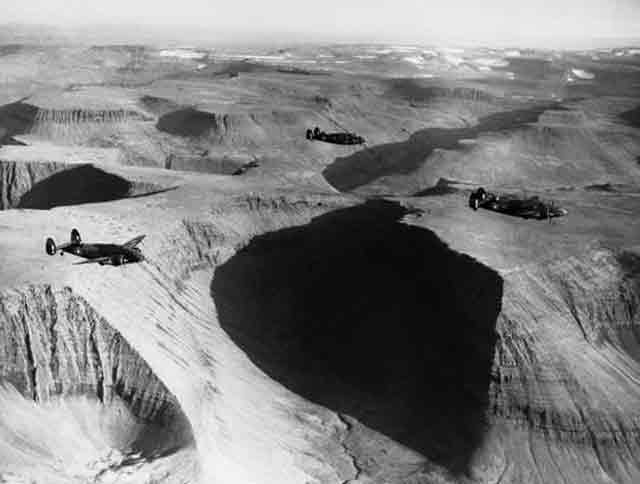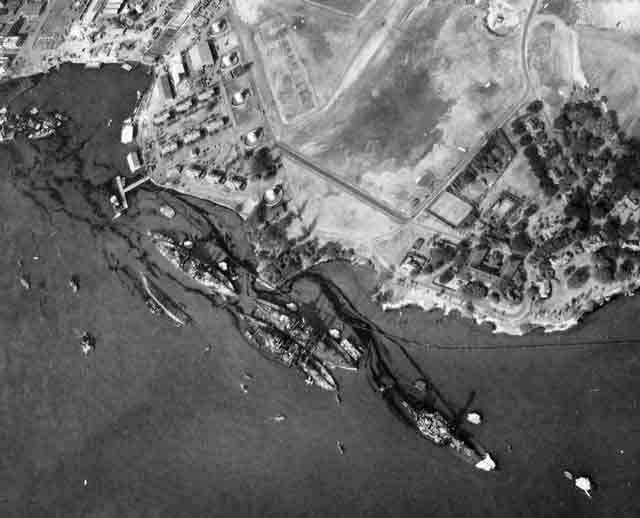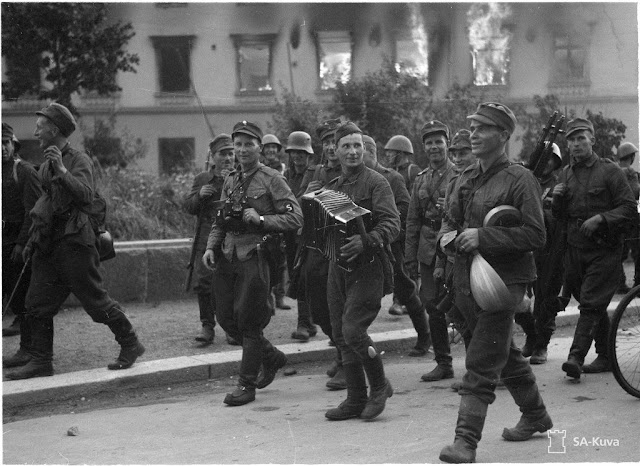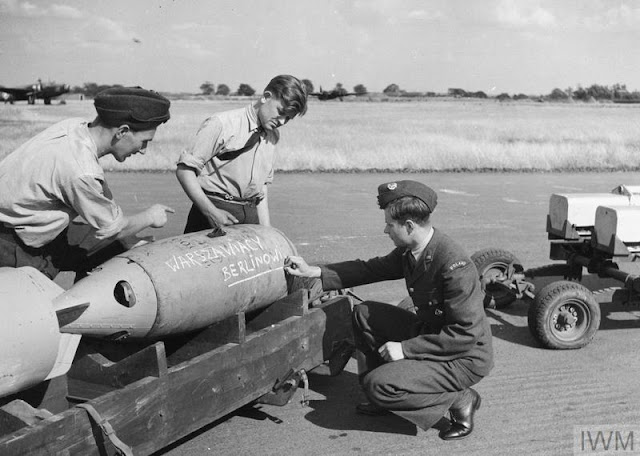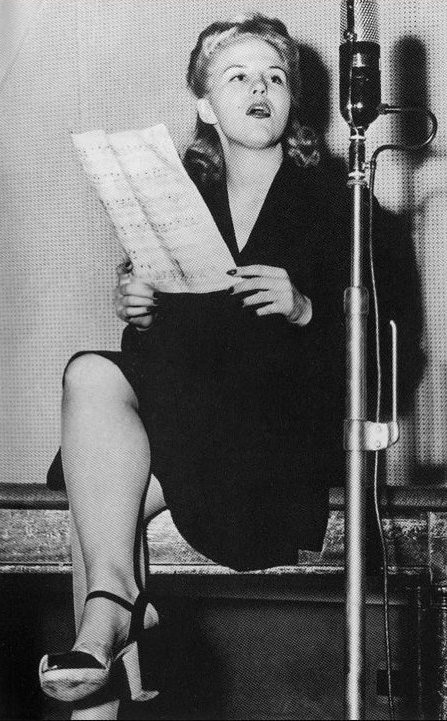Tuesday 12 August 1941
 |
| HMS Prince of Wales at the Atlantic Conference, August 1941. Photographed from USS Augusta (CA-31). Donation to US Naval Historical Center by Vice Admiral Harry Sanders, USN (Retired), 1969. |
Eastern Front: Adolf Hitler on
12 August 1941 issues a supplement to his directive No. 34 of 30 July 1941. This directive,
No. 34A, addresses military objectives and strategies on the Eastern Front. Its three main points are:
- In the Army Group North sector, the objective is to encircle Leningrad and effect a junction with the Finns advancing from the north (it does not say to actually take Leningrad);
- In the Army Group Center sector, "the most important task is to eliminate the enemy flanking positions." Pointedly, the directive notes that "Only after these threats to our flanks have been entirely overcome" can the advance on Moscow resume;
- In the Army Group South sector, halt the attack on Kyiv and instead focus on establishing bridgeheads across the Dnieper River, occupy the Crimea, and occupy Kharkiv and the Donets area.
In some respects, Fuhrer Directive No. 34A already is outdated, because General Kleist has started moving his Panzer Group No. 1 north towards Kiev in order to effect a junction with General Guderian's Panzer Group No. 2, which is heading south toward Gomel. However, the main effect of Directive No. 34A is to eliminate any misunderstandings among the general that Hitler is going to change his mind about advancing on Moscow any time soon.
Some warning signs are starting to appear in the Wehrmacht concerning manpower. The Liaison Officer for Army Group North to OKH, Lt. Colonel Langhaeusor, reports that it has no reserves and manpower is "tight." OKH addresses this by keeping Luftwaffe units in the area to make up for manpower shortages. For the moment, this problem can be remedied once some convenient railroad lines are taken, as they are the only way to bring forward large numbers of troops. In order to form strength to advance, OKH has to juggle units and focus on one area at a time - which at the moment is at Lake Ilmen.
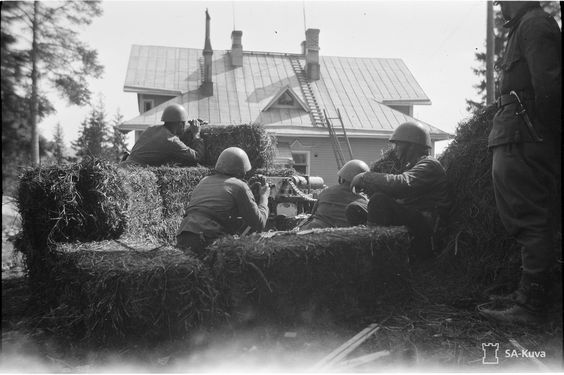 |
| A Finnish machine gun team set up among some hay bales in Sortavala, 12 August 1941 (SA-Kuva). |
In the Far North sector, the Finns now are within striking distance of the Murmansk railway at Loukhi. However, the Soviets are frantically bringing in the 88th Rifle Division to block the remaining 20 miles northeast to the main railway line.
In the Army Group North sector, German 16th Army makes some local gains around Lake Ilmen. The Germans also make some minor gains near Narva. Soviet 34th Army counterattacks toward Lake Ladoga. Overall, Army Group North is fairly static for the moment.
In the Army Group Center sector, units south of Rogachev reach the Dneipr River and II Corps puts three divisions across the river south of Zhlobin. General Guderian's Panzer Group II attack toward Gomel. The Germans encircle parts of the Central Front near Krichev. The Soviets are counterattacking in several places without success.
 |
| An advanced divisional command post of German 21st Infantry Division on August 12, 1941. |
In the Army Group South sector, the Romanian 4th Army continues closing the land routes to the Soviet port of Odesa. The Romanian navy begins deploying submarine Delfinul and torpedo boats Viscolul, Vijelia, and Viforul along the Soviet coast to intercept any relief attempts. The Soviets, meanwhile, use the Danube Flotilla to begin evacuating Soviet troops from the lower Dneipr River. Soviet river gunboat Peredovoy sinks in action today.
German Eleventh Army reaches the outskirts of Mykolaiv, isolating it. The Germans begin rushing reinforcements to the city to cut off the Soviet lines of retreat.
In the air, Oblt. Kurt Sochatzy, the Staffelkapitän of 7th Staffel of JG 3, has his airplane rammed by a Soviet I-16 fighter over Kyiv. Sochatzy is taken as a prisoner, but the Luftwaffe awards him the Ritterkreuz later in the day anyway. Siegfried Freytag of JG 77 downs a MiG 3 for his tenth victory.
The Soviets begin preparing the Volga region for combat. The Central Committee orders the deportation of the population of the Volga German Autonomous Republic to Siberia and Central Asia.
 |
| The RAF raid on Knapsack, Cologne, Nordrhine-Westphalen, Germany. To the left is a Bristol Blenheim Mark IV (extreme left), serial V6391, marked RT-V of No. 114 Squadron, 2 Group. |
European Air Operations: The RAF makes a maximum effort on 12 August 1941. These are the heaviest daylight bombing raids on Germany of the war to date. Weather is good again after a long unsettled period. The British wish to demonstrate to ally Joseph Stalin that it is doing its best to draw Luftwaffe units from the Eastern Front to the defense of the Reich. The Luftwaffe still has fighter defenses in the west, but they are depleted by the needs of the Eastern Front.
RAF Fighter Command begins the day with a sweep by 84 fighters escorting six Hampdens against St. Omer. The Luftwaffe sends up 150 Bf 109s to defend its airfield there.
During the day, RAF Bomber Command sends 54 Blenheim bombers to attack the Knapsack (38 bombers) and Quadrath (18) power stations outside Cologne. The Knapsack plant is a Goldenburg-Werk lignite (brown coal) power station and is hit hard. The Germans shoot down 10 of the bombers. This is an 18.5% loss rate, entirely unacceptable for a sustained bombing campaign.
There also are some diversionary operations during the Cologne attack. Six Hampdens each attack St. Omer, Le Trait dockyards, and Gosnay, and four fortresses attack Cologne, De Kooy airfield, and Emden. These all return without loss and are escorted by heavy fighter escorts (144 at Gosnay, for instance).
In addition, two Blenheims acting as navigational leaders, or pathfinders, also are shot down. Overall, RAF Bomber Command loses 12 bombers or 15.4% of the 78 sorties made during daylight operations.
There also is heavy air fighter combat during the day over France and the Low Countries. RAF Fighter Command puts 174 sorties in the air, and the RAF claims 4 Luftwaffe fighters destroyed and 6 probably destroyed, along with 10 others damaged. The RAF loses 6 Spitfires.
After dark, RAF Bomber Command sends 65 Wellingtons and 13 Hampdens over Hannover. The Germans shoot down four Wellingtons, including one carrying experimental Gee direction-finding equipment. The Gee plane is destroyed completely and no secrets are revealed.
The RAF also sends 40 Wellingtons, 12 Halifaxes, 9 Stirlings, and 9 Manchesters against Berlin - a total of 70 bombers. Less than half - 32 - of the force actually bombs in the Berlin area. In addition, the Germans shoot down 9 bombers, a 12.8% loss rate.
RAF Bomber Command also sends 36 Hampdens over Magdeburg without loss and 35 bombers (30 Wellingtons, 3 Stirlings, and 2 Halifaxes) over Essen. The RAF loses one bomber, and the night's objective - the Krupps factory - is not hit.
The RAF also sends minor operations of 14 bombers to Le Havre and one Stirling over Bielefeld, without loss.
Overall, it is a rough night for both sides. The German cities take moderate damage, while the RAF loses 20 planes out of 234 sorties, an 8.5% loss ratio.
 |
| The church in Kurkijoki, Ladoga Karelia, 12 August 1941. The city was taken by the Soviets in the Winter War and occupied for shortly over a year. During that time, the Soviets turned the church into a cultural center. The communist propaganda has been desecrated, likely by the liberating Finnish troops. This church now is in the Lahdenpohja district of the Republic of Karelia, where its territory is divided between the Kurkijoki and Elisenvaara municipalities. |
Battle of the Baltic: Ships of the German 1st S-Boat Flotilla sink Soviet minesweeper R-101 "Rybinci" in the Gulf of Finland.
German torpedo boats sink Soviet minesweeper Tsczcz-41.
Soviet submarine L-4 (Lt. Cmdr. Polyakov) lays 20 mines southeast of Mangalia, Romania.
Battle of the Atlantic: U-568 (Kptlt. Joachim Preuss), on its first patrol out of Trondheim and operating with wolfpack Grönland, torpedoes and sinks Royal Navy corvette Picotee (Lt. Harrison), which is escorting Convoy ON-5, south of Iceland. Everybody perishes - there are 65 deaths. U-586 also claims to torpedo another ship, but there is no confirmation.
The Luftwaffe bombs and damages 1900-ton Royal Navy auxiliary vessel Eaglescliffe Hall about two miles east of Sunderland. Eaglescliffe Hall is taken under tow to Sunderland.
Royal Navy 16-ton auxiliary ship HMT Express hits a mine and sinks one mile southwest of East Spaniard Buoy at Whitstable.
According to some sources, 124-ton Norwegian freighter Cito sinks today after hitting a mine in the Sognefjord (north of Bergen). Other sources claim this happened on the 11th.
Royal Navy heavy cruiser HMS London claims to bomb a submarine with her Walrus aircraft north of the Azores, but there is no confirmation.
Italian submarine Tazzoli makes an unsuccessful attack on a freighter south of Liberia.
A Luftwaffe Focke-Wulf Fw-200 Condor of I,/KG40 spots Convoy HG-69 and informs BdU in Paris.
Royal Navy destroyers HMS Airedale and Tetcott and minesweeper Shippigan are launched.
Australian corvette HMAS Meadowsweet is laid down.
British Convoy "Dervish" departs from Liverpool bound for Archangel via Iceland.
U-657 is launched.
 |
| A British soldier in North Africa getting a shave, 12 August 1941. |
Battle of the Mediterranean: The Australians at Tobruk have endured months of artillery shelling, flies, and scorching desert sun. Lieutenant-General Thomas Blamey of XIII Corps, backed by the Australian government, has convinced Whitehall to evacuate them and replace the Tobruk garrison with fresh soldiers. The 5000 Australian troops begin leaving tonight and are replaced by Polish troops.
Royal Navy 372-ton lighter HMS A.14 (aka LCT.14, Lt. Mullens) hits an aerial mine laid by a Junkers Ju-88 of LG-1 and sinks in Tobruk Harbor. Everyone survives.
Dutch submarine makes an unsuccessful attack on a freighter in the Ligurian sea.
Royal Navy submarine HMS Torbay (Cdr. Miersa) unsuccessfully attacks an Axis convoy four miles west of Benghazi.
Royal Navy destroyers HMS Kandahar and Kimberley depart from Alexandria on a supply run to Tobruk, first stopping at Mersa Matruh.
Italian minelayers Aspromonte and Reggio lay minefield SN-41 in the Sicilian Strait.
Troops of the 8th Battalion of the Manchester Regiment begin training on Gozo Island.
Battle of the Black Sea: Soviet icebreaker Ledokol No. 5 hits a mine and sinks.
The Luftwaffe bombs and sinks Soviet freighter Novorossiysk in the Gulf of Odesa.
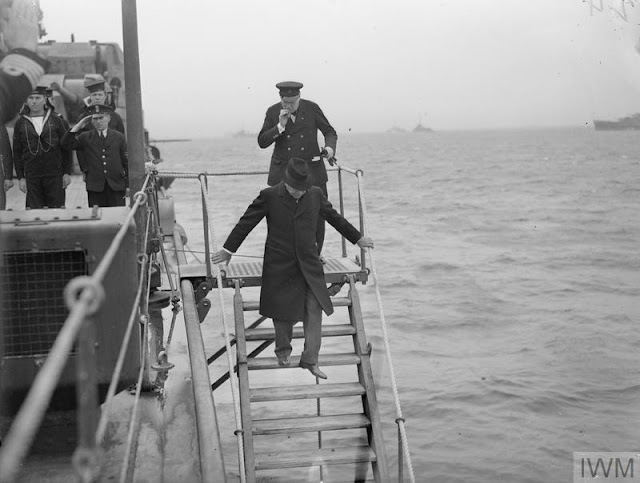 |
| "The Prime Minister and Lord Beaverbrook leave the PRINCE OF WALES to say good-bye to President Roosevelt aboard USS AUGUSTA." © IWM (A 4863). |
Anglo/US Relations: President Roosevelt and Prime Minister Winston agree to the Atlantic Charter (a name only later applied to it at this time it is called "Joint Declaration by the President and the Prime Minister," or more commonly simply as the "Joint Declaration") at Placentia Bay, Newfoundland. There isn't any formal document, and nothing ever is signed. Instead, the staffs prepare a "final draft" and give copies to the radio operators of the USS Augusta and HMS Prince of Wales to send out to the media.
The Atlantic Charter sets forth eight points, twice as many as Roosevelt's "Four Freedoms" but in many cases similar in tone to them. They provide:
- no territorial gains to be sought by the United States or Great Britain;
- territorial adjustments elsewhere to be made with reference to the wishes of the peoples affected;
- self-determination of peoples;
- removal of trade barriers for both "victor [and] vanquished";
- global economic cooperation and advancement of peoples' welfare;
- participants to work toward a world free of want and fear;
- disarmament of everyone, including the victors, after the war
- freedom of the seas;
The striking thing about the eight points is that they don't mention military aims - because the United States is not at war. Instead, they refer to what appears to be post-war objectives. However, they very subtly reach out to peoples of the Axis powers by, for example, reassuring them that there won't be post-war trade sanctions on the losers.
After the communique is issued, Churchill departs back for Britain aboard Prince of Wales, while Roosevelt sails aboard cruiser Augusta down to Blue Hill Bay, Maine, where Presidential yacht Potomac (AG-25) is anchored.
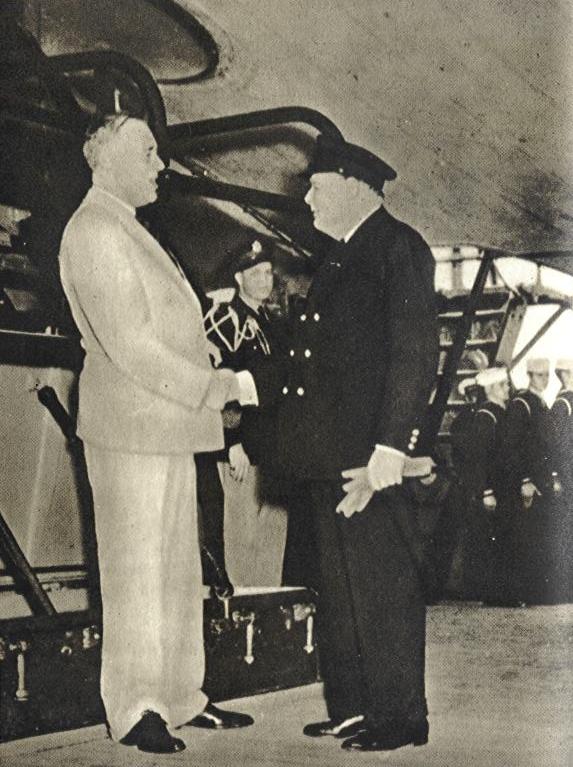 |
| President Roosevelt wishes Prime Minister Churchill a safe voyage home on 12 August 1941. |
German/Finnish Relations: Finnish Ambassador T. M. Kivimäki notifies the German Foreign Ministry that Finland will not be joining the Anti-Comintern Pact because "the Finnish attitude towards communism is already clear." In fact, Finland wants to remain a co-belligerent rather than an ally of the Reich and prefers to have few agreements tying the two countries together militarily.
Soviet/Polish Relations: The Soviets make official their amnesty of Polish citizens in the USSR. This enables many to join the army being formed by General Anders, and others to work on collective farms.
US/Italian Relations: US naval authorities seize 5592-ton Italian freighter Dino in Boston. The US reflags Dino as Panamanian Meridian.
US/Japanese Relations: The Japanese recall liner Asama Maru, which is nearing the United States with American passengers and a cargo of silk, due to the imposition of US sanctions.
 |
| "Royal Air Force mechanics in Singapore are working at top pressure to assemble, and pilots to test, large numbers of Brewster Buffaloes, American high-speed fighting planes. At one Singapore Royal Air Force station hangar after hangar is crammed with crated Buffaloes. Many of the planes are already in the air over Malaya, flown often by British fighter pilots, who have already shot down German planes (one of the ten) in Europe. This photo shows part of one of the Buffalo assembly lines." Circa 12 August 1941. © IWM (K 598). |
British Military: The RAF forms No. 488 (NZ) Squadron at RAF Leuchars, Fife, Scotland. The first commander is Wing Commander J.A.S. Brown, and the unit's mission is anti-shipping patrols and convoy protection.
US Military: US military maneuvers being held at New River, North Carolina are concluded. The US 1st Marine Division and 1st Army Division have been training together.
US Navy Motor Torpedo Squadron 3 is commissioned. It is assigned to the Philippines.
The US Army-US Marine Corps 1st Joint Training Force under Major General Holland M. Smith is redesignated the Atlantic Amphibious Force.
 |
| The 260th Infantry Division crosses the Berezina River near Barysaw, Minsk Oblast, Belarus, Soviet Union. 12 August 1941. |
Japanese Military: Battleship Yamato ("Battleship No. 1") departs from Kure, Japan for sea trials.
Aircraft carrier Hosho is named the flagship of the Japanese Carrier Division 3.
The IJN requisitions 6442-ton freighter Keiyo Maru for use as an armed auxiliary aircraft transport. This conversion includes putting 120-mm (4.7-inch) guns in the bow and stern.
Soviet Military: Marshal Semyon Timoshenko drafts an order calling for the execution of deserters. He submits it to Stalin for approval.
US Government: The House of Representatives passes by 203-202 a bill extending the term of military service of draftees from 12 to 30 months. The bill now goes to the Senate.
China: Chinese General Zhao Chengshou, commander of the Chinese 7th Army, signs a secret armistice with the Japanese. Zhao has been convinced by Chinese collaborators that the Japanese are willing to work with the Chinese and not just conquer them.
 |
| Luftpost (propaganda), No. 13, 12 August 1941. |
Holocaust: Romania compels all Jews to register for forced labor.
French Homefront: Premier Petain makes a radio
address to the French people. He enumerates a dozen measures that "I have decided." These include suspending political parties, try former officials who are "responsible for our disaster," and require all government officials to "swear an oath of fealty to me." He sums up, "In 1917 I put an end to mutiny. In 1940 I put an end to rout. Today I wish to save you from yourselves."
Petain also announces his previous decision to appoint Admiral Darlan, "to whom public opinion has not always been favorable or fair," to be Minister of National Defense. He pointedly emphasizes that "Authority no longer emanates from below. The only authority is that which I entrust or delegate." In fact, Petain uses the word "I," as in "I have decided" and "I entrust or delegate," a total of 28 times in the speech.
The radio broadcast reinforces in the minds of some that perhaps Petain has let his position of authority go to his head a little bit.
Canadian Homefront: The government requires Japanese-Canadians to carry registration cards that include their photos and thumbprints.
 |
| Hans Scholl, member of the White Rose resistance group in Germany. At this time, they are still contemplating how and whether to resist. On 12 August 1941, Scholl writes to a friend: “In a world dominated by brutal negation, I can still see the positive values. (…) The shadows are there because the light is there. But the light comes first.” (Geschwister-Scholl-Archiv/Süddeutsche Zeitung Photo). |
American Homefront: Metro-Goldwyn-Mayer releases "Dr. Jekyll and Mr. Hyde," directed by Victor Fleming (of "Gone With The Wind" and "The Wizard of Oz") and starring Spencer Tracy, Ingrid Bergman, and Lana Turner. This is a direct remake of a 1931 film of the same name and cements a "theatrical" version of the tale that is different than the original Robert Louis Stevenson 1886 novella. In fact, the studio goes to the extreme lengths of finding and destroying every copy of the 1931 version that it can, though decades later a full version of that earlier film is found and restored. The film turns a $350,000 profit on a budget of $2.351 million and earns three Academy Award nominations in technical categories. The film is notable for Tracy's iconic performance in the lead role and Bergman playing against type as a "bad" girl.
Future History: Deborah Walley is born in Bridgeport, Connecticut. She becomes an actress who rises to prominence in the late 1950s and 1960s, appearing in television series "Naked City" and "Route 66" and "Beach Blanket" films such as "Gidget Goes Hawaiian" (1961), "Beach Blanket Bingo" (1965), and "Ghost in the Invisible Bikini" (1966). Walley passes away on 10 May 2001.
Letícia Román is born in Rome, Italy. She starts a career in the Elvis Presley film "G.I. Blues" (1960), then goes on to appear in other films in the 1960s before retiring to start a family.
 |
| Winston Churchill aboard HMS Prince of Wales, August 1941. |
August 1941
August 1, 1941: More Executions on CreteAugust 2, 1941: Uman Encirclement ClosesAugust 3, 1941: Bishop von Galen Denounces EuthanasiaAugust 4, 1941: Hitler at the FrontAugust 5, 1941: Soviets Surrender at Smolensk August 6, 1941: U-Boats in the ArcticAugust 7, 1941: Soviets Bomb BerlinAugust 8, 1941: Uman Pocket CapturedAugust 9, 1941: Atlantic Conference at Placentia BayAugust 10, 1941: Soviet Bombers Mauled Over BerlinAugust 11, 1941: Rita Hayworth in LifeAugust 12, 1941: Atlantic Charter AnnouncedAugust 13, 1941: The Soybean CarAugust 14, 1941: The Anders Army FormedAugust 15, 1941: Himmler at MinskAugust 16, 1941: Stalin's Order No. 270August 17, 1941: Germans in NovgorodAugust 18, 1941: Lili MarleenAugust 19, 1941: Convoy OG-71 DestructionAugust 20, 1941: Siege of Leningrad BeginsAugust 21, 1941: Stalin EnragedAugust 22, 1941: Germans Take CherkassyAugust 23, 1941: Go to KievAugust 24, 1941: Finns Surround ViipuriAugust 25, 1941: Iran InvadedAugust 26, 1941: The Bridge Over the DesnaAugust 27, 1941: Soviets Evacuate TallinnAugust 28, 1941: Evacuating Soviets SavagedAugust 29, 1941: Finns take ViipuriAugust 30, 1941: Operation AcidAugust 31, 1941: Mannerheim Says No2020




